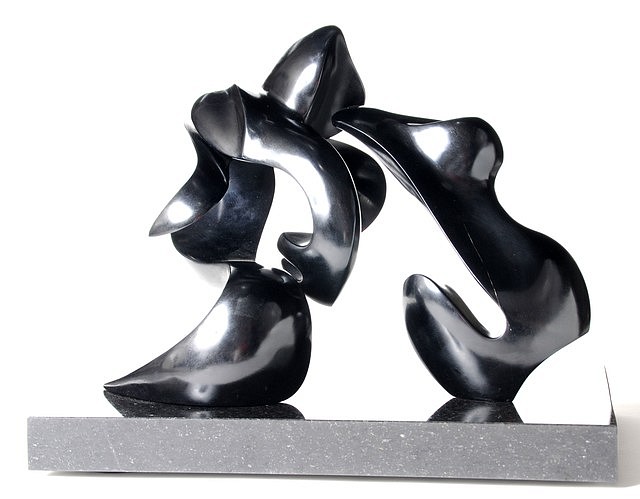
In Emotive Sculptures, Alexander Krivosheiw Finds His Voice
February 13, 2015 - Artsy: Karen Kedmey
For some, writing may be a preferred form of communication. For others, talking, rhyming, or singing serve as ideal modes of expression. For artists, visual works often serve as conduits for ideas, thoughts, and emotions, which for contemporary sculptor Alexander Krivosheiw, come tumbling out in three-dimensional forms.
“My inspiration for my art is, quite simply, how I see our world and connect to it...finding my place in the vast universe,” Krivosheiw has said. Blending time-honored and contemporary metalworking techniques, he shapes aluminum and bronze into sensuous, curving, multipart forms, polished to a high sheen. These biomorphic forms sit on the seam between abstraction and figuration. Some, for example, appear as two sinuous figures sharing a first kiss, evoke a woman’s shapely torso, or suggest leaves and blades of grass. Others, with their kinetically swirling loops and ridges, seem inspired by the way gusts of wind lift leaves into the air or cause loose fabrics to snap and undulate.
“As a child of twelve I discovered an inherent and purely instinctive attraction [to] the movement of natural forms,” the artist has described, in reference to an early and enduring inspiration. “I had an immediate desire to capture and to hold these objects into stillness, so I could further examine them.” His other, more mature inspirations encompass Greek mythology, archeology and social anthropology, and industrial and modern design. He is also driven by his emotions and uniquely personal responses to the world, as well as by the universal experiences of love, passion, and beauty.
Often, Krivosheiw’s works—which range in scale from small to monumental—begin in two dimensions, as sketches. He then transforms his marks on paper into three dimensions, building each sculpture by hand and piece-by-piece with individual sheets of metal. He honed his craft in Greece, where he learned the traditional techniques he uses today, and by apprenticing for years with a master sculptor. He sees his art as a form of language, a way to communicate emotions, thoughts, and impulses that he claims to have “no other way of expressing.” And for this, as he has said, he is thankful: “My sculpture brings permanence to my expressions, and for that I am grateful.”
Back to News
